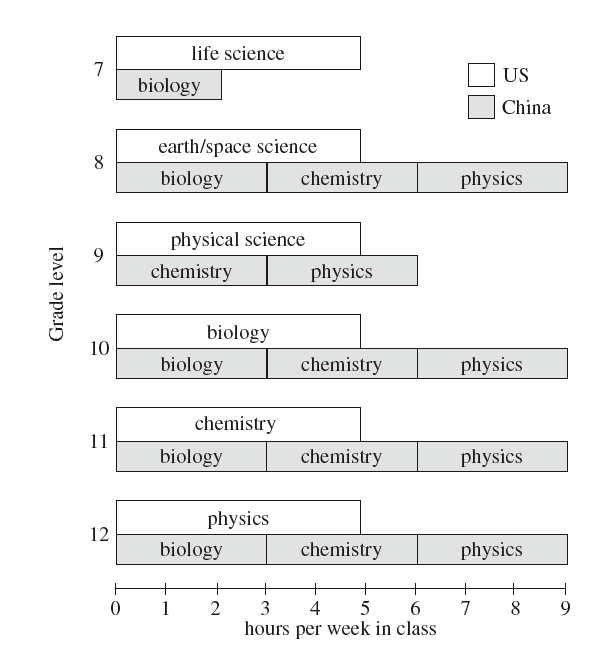Layered and Spiraling Curriculum

From: The Sourcebook for Teaching Science, Chapter 24
American Model - Layered Curriculum (Photo: Grand Canyon, 2006) - click to enlarge

International Model - Spiraling Curriculum (Photo: Supreme Court Building, DC.)
Although there is no national system of education in the United States, recommendations by national organizations, such as the American Association for the Advancement of Science, National Science Teachers Association, and National Research Council, have a profound influence on state and local curricular decisions. For example, after the National Commission on Excellence in Education’s landmark Nation at Riskreport in 1983, schools and districts gave greater emphasis to science, and by the end of the decade, the number of graduating seniors who had taken science had increased as follows: biology, from 75% to 92%; chemistry, from 31% to 50%; and physics, from 14 to 22%. Although this represented a significant increase in the amount of science instruction American students received, it was still significantly less than in many countries, particularly with respect to the physical sciences. For example in the early 1990s, it was found that Chinese secondary students spent 140% as much instructional time in biology, 200% as much time in chemistry, and 280% as much time in physics. Figure 24.1 shows standard curricular sequences for American and Chinese high school students. Note that in grades 8, 10, 11, and 12, Chinese students receive nine hours of science instruction, comprised of three hours each of biology, chemistry and physics. This same study observed that, “The Chinese science curriculum is uniform, narrow, and deep, while the American curriculum is varied, broad, and flat. The Chinese curriculum is vertical and spiral in nature – the same science concepts and skills appear again and again in the curricular materials at different levels of schooling, with greater knowledge and deeper understandings at the higher levels.” Comparisons with other developed nations have been similar, and the United States science and math curriculum has been described as "a mile wide and an inch deep," when compared to that of other developed nations
United States and National Commission on Excellence in Education. (1983). A nation at risk : the imperative for educational reform: a report to the Nation and the Secretary of Education. Washington, D.C.: National Commission on Excellence in Education.

